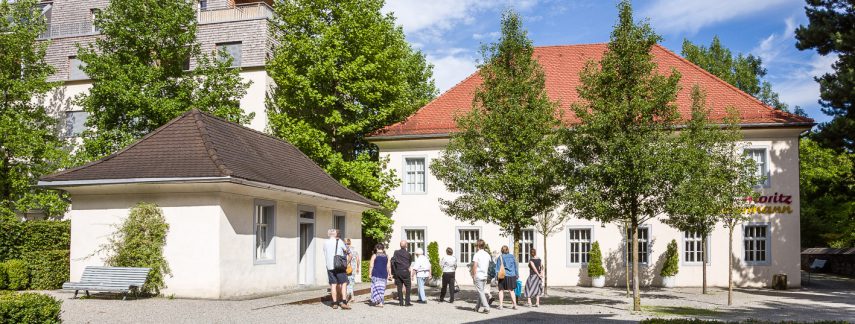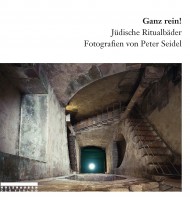The Hohenems mikvah was erected in 1829 according to the plans of the Bregenz master builder Ensle and is a typical construction of the early 19th century. Sanitary regulations affecting large areas of life had rendered necessary the replacement of the old community mikvah—damaged by water penetration—beneath the synagogue. The modest new building next to the school included a small dressing room and the ritual bath with a staircase down to the ground water. The mikvah could be heated and was by then probably used only by women. For a long time, the mikvah was administrated by Babette (Payerle) Landauer, wife of the butcher Benjamin Landauer.
Even today, mikva’ot are built as part of a synagogue buildings as well as separate constructions; in the past they were sometimes also in private houses. Numerous rabbinical instructions regulate the character and functionality of the mikvah, especially to ensure that the water be “living” and also to provide instructions on how to mix the ground water (or rain water) with warm water to make the mikvah more comfortable. This was also the case with the Hohenems mikvah that used ground water.
We do not know for how long the Hohenems mikvah was in use. The significance of religious laws and traditions were on the wane in Hohenems by 1900. However, use until the last decades of the 19th century is quite likely. After 1938, the mikvah, like all other buildings of the Jewish community, was “Aryanized.” In the end, following restitution to the Jewish community after the war, the building was sold, the underground bath covered, and the space used as a workshop. In 1996, the pool was excavated again and in 2009, the building was restored.
Today, the ground water level is too low as to allow for the use as a bath.
The Mikvah today
Today, the historical mikvah in the “Schulgasse” in the Jewish quarter is a showcase of its history that serves as an extension of the Jewish Museum. If you want to visit the mikvah, please come to the Museum’s desk.
Mikvah. The Jewish Ritual Bath
A mikvah is an immersion bath for the ritual cleansing of the body following encounters with life cycle events and boundary experiences. The female cycle, sexuality, wedding, birth, contact with death, Shabbat, important holidays, and finally conversion to Judaism require, according to Jewish tradition, a visit to the mikvah. Today it is mostly orthodox Jews who keep this ritual alive. The cleansing act consists of the immersion of the full body in “living water,” meaning not in standing water. It is imperative to be painstakingly clean before immersion in the mikvah. The mikvah itself solely serves the purpose of taharah, the mental and spiritual purity. Religious men visit the mikvah, depending on their religious orientation, before High Holidays, Shabbat, or even before every morning prayer. However, for a long time the mikvah occupied a central place in the life of Jewish women. The first visit to the mikvah in the traditional life of a Jewish women takes place on the day preceding her wedding. Thus, mikva’ot became largely intimate meeting places for married women.
To this day, only strictly religious women visit the ritual bath regularly one week after their menstruation to regain the required “purity” for the sacred act of sexuality. In some modern religious movements in Judaism the mikvah is rediscovered as a part of spiritual life. But the majority of Jewish women do not attend mikvah anymore.



